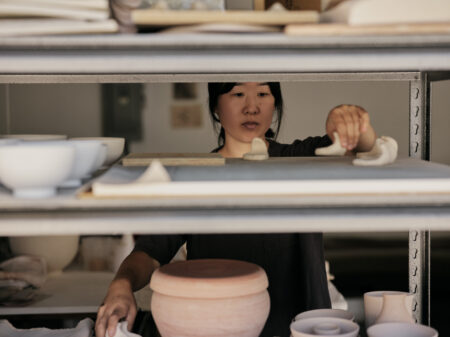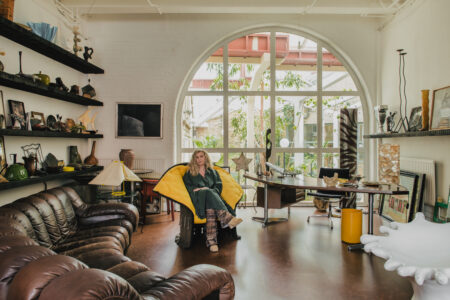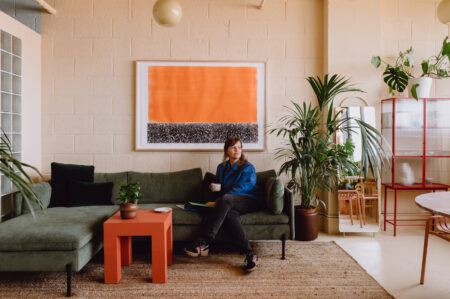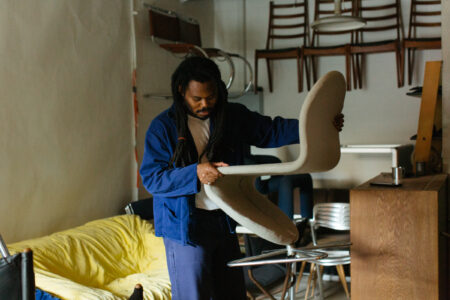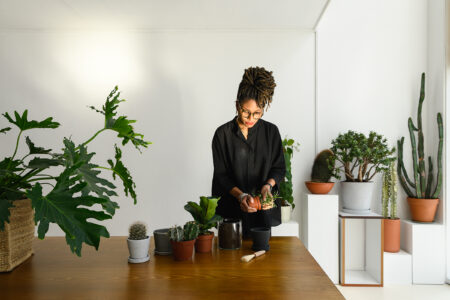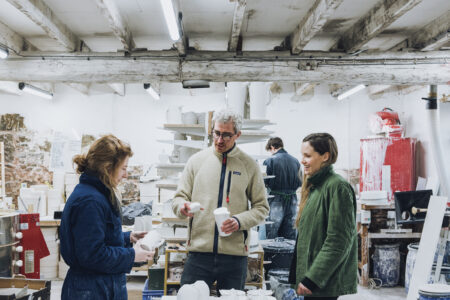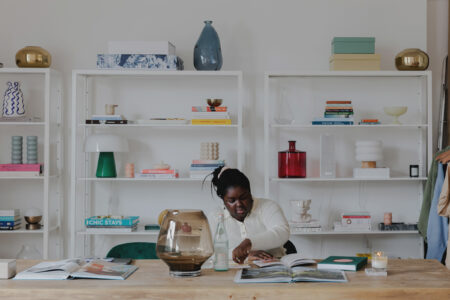Studio Visits: photographer Ronan McKenzie’s community-focused arts space in north London celebrates Black artists

Opening a new gallery in a pandemic may seem like a strange thing to do, but photographer Ronan McKenzie isn’t interested in doing things according to perceived wisdom. Perhaps that’s why she didn’t end up opening a conventional gallery at all, but a welcoming, community-focused space in Holloway, north London, where art and conversation are readily available and nothing is expected in return. With a warmth and openness that is reflected in the design of the space and the exhibition programme, Ronan welcomes us in to discuss the conception of HOME as a place for celebrating a diverse range of artists, and where she’d like to take it in the future.




Ronan: “Photography is my main practice, but it’s always been a dream to open a gallery space. I started thinking seriously about a permanent space after I curated an exhibition in 2018 called “I’m Home” that brought together Black British women artists, including Rhea Dillon, Joy Gregory, Liz Johnson-Artur and myself.
“The show was all about home and family; themes that are interconnected throughout the different areas of my work. We had an exhibition, workshops and a film night – people really engaged with it but it was only temporary. I wanted to create something more permanent, to make a mark and build a place where people could come together on a regular basis.
“When Covid hit, I didn’t work for about four months as no photo shoots were happening. During that time, I really reassessed what I wanted to be doing with my time, what I wanted my day-to-day to look like and I really challenged myself to go for what I believed in. It’s so liberating to face the worst-case scenario of following your dream, accept that it might happen and then go ahead with what you want to achieve.
“Initially, I spent a lot of time trying to find free or affordable spaces, but they were all very temporary, so I decided to invest my own money and look for a commercial space. I’d been saving money from my photography work, and I was in a financial position to invest in the project personally. We’re not used to seeing people put their hands deep into their own pockets for others, so there’s an assumption that I’m backed by family money, but that’s not the case.


“Space in London is at such a premium now; it’s become a rare luxury. For an artist who wants to organise a pop-up exhibition or a charitable organisation who needs a space for their activities, they are either priced out or are very limited in their options. Since the pandemic, there are so many empty spaces that developers and landlords are just sitting on. It makes no sense; give it over to artists who want to communicate with others and let them activate their ideas.
“This space was originally aimed at the open-plan office market. It was whitewashed, with lots of server and telephone points, lots of metal wiring and plug sockets everywhere. It was meant to fit in lots of people at desks, so we had to transform it completely.
“My friend Jobe Burns is an amazing spatial designer, and he helped plan the design. We wanted it to feel warm and welcoming, somewhere like home, but also aspirational and uplifting. We didn’t want it to feel austere or too high-end luxury so that visitors instantly felt excluded; that was so important. It needed to be a place where people could come and just be. Somewhere they could come and see art, read books, sit down, listen to music and chill without having to buy a coffee or spend money. Apart from libraries, those places are really rare now.
“Over the last few years, I’ve become a lot more aware of the spaces I feel comfortable and connected to and those I don’t. I respond to places that have a warm and grounded feel to them. It’s really important to be around people who care for others and to witness that care. When you come here, you see how much care and attention has been poured into the space and everything we do.
“We created these beautiful clay walls to bring a tactile feel and brought in the carpet, which I think instantly calms you. The furniture is a mixture of some really comfy and welcoming pieces we invested in and then other bits from Zara Home so that there were elements around that you could see in your own home. My mum made the curtains that sit all along the large windows; it was good to have her involved as she has always been a big part of my work.




“With the programme, we have four exhibitions a year. The first year of curation has been focusing on Black women artists. The second year opens up to explore the theme of connectivity, whether that’s through relationships or travel.
“I’m not from an art gallery background, but I think that’s freeing. We’re not indoctrinated into one way of doing things; we’re fluid and open to doing new things. With each exhibition, we want to extend the programme to invite other artists in, so for each show, we have a “Reinterpreted Series” where we invite two or three other artists to respond to the work on display by creating new pieces. Often, I think the art world can be very competitive, so it’s nice to facilitate collaborations and conversations between artists.
“Making space for these conversations is essential when it comes to who we have through the door. We are in conversation with Accumulate London, a youth homelessness charity, to organise tours for the young people they work with so they can come and hang out, see the exhibitions, meet the artists, look through the books we have. It’s about offering access to the things they’ve been made to feel aren’t for them. When you meet an artist or hear their story, and they’re from a similar background or area, these paths become more accessible.
“We’ve offered bursaries to artists and our current offering is a studio residency and exhibition with Cob Gallery. We’re also working on another residency with a space called Artworks in Portugal on offering a two-month residency for a Black female artist to spend time there creating work, with her flights, fees and materials covered. We’re really trying to support artists at the making stage of the process to help them experiment, collaborate and develop their practices.


“It’s so exciting to think about being here for five years. In terms of cultural spaces for the Black community, it all feels quite temporary. There was the Black Art Gallery, which was originally near here, but it didn’t last. I think we need to know that our stamp is permanent. For many people from immigrant families, first or second generation, we grew up here, but we don’t have any markers that this is our territory, and I think it’s important that we do.
“The work at HOME has really informed and developed my photography work. I think fashion diminished my photography work to one or two things, but now I’m reclaiming it and expanding my thinking around my practice. I’m currently planning a new body of work on love and tenderness for a solo exhibition next year.
“Over the pandemic, I learned that life isn’t all about money. I lived a lot simpler and things were good. I don’t need to be earning all the money, I just need to earn enough to do what I want to do. I feel the same about the gallery; I don’t want to be out here trying to make thousands of pounds; as long as it can sustain itself and support the community it’s here for, then I’m really happy.
“I want people to know this as a destination. That it’s explorative and accepting and you can come here and have a conversation and we don’t need to agree on everything but we respect each other and you will be heard.”






